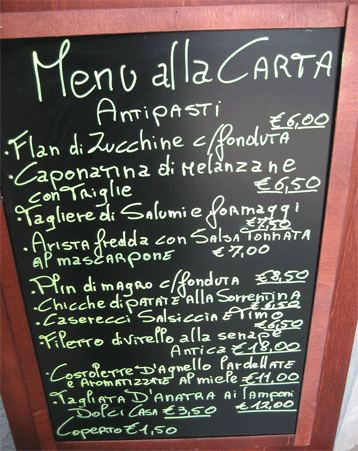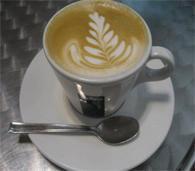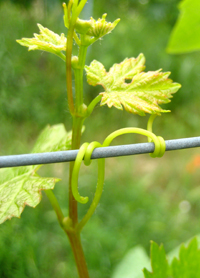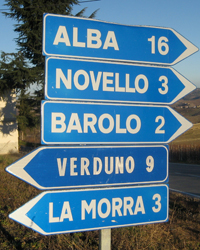
English is seldom spoken
The first thing to know about Piemonte is that English is not spoken as frequently as in other Italian tourist destinations and that decent guidebooks don’t exist.

Difficult planning
For example, the 3 villages that make up Barbaresco have 2 restaurants listed in Trip Advisor; 1 Michelin Starred and another that wouldn’t make our top 100. There are a dozen or more! Websites are not always available but we know lots of excellent places to eat and drink and as important the ones to avoid.
We’re locals and know the region
It’s the same throughout the wine-growing region which is made up of dozens of beautiful hillside towns and villages overlooking the vineyards. Almost every historic small hillside town seems to have its own festival, castle, church, restaurants, cafes and most importantly wine . The whole area is a still undiscovered gastronomic paradise and we live here, know the people, and where to go.
The producers and cantinas
We regularly meet the producers, visit the cantinas and taste the wines so we can advise you on the best. These are working farms so not all have the pretty cellars one would like to imagine but a warm welcome is assured. They take a real pride in their wines which they love to share.
Where and what to eat
 Piemonte, like every region, has a cuisine all of its own with many dishes unique to the area , but regular Italian favourites are also available. Most places offer antipasti (starter), primi (usually pasta), secondi(main course) and dolce (desert) with or without a menu, fixed price or a la carte. A simple 2 course lunch can be had for €10-15 with wine and water, an 8 course dinner with no choice but excellent wine @25-35. Michelin* restaurants are also here but perhaps location is more important: outside terrace overlooking the hills and vineyards, maybe a restaurant in a castle or a cellar, a bustling pizzeria or trattoria, or simply people-watching in cafe society. We’ll take you there. Ethnic food is rare outside of the big cities although Chinese and, incredibly, excellent Japanese can be found.
Piemonte, like every region, has a cuisine all of its own with many dishes unique to the area , but regular Italian favourites are also available. Most places offer antipasti (starter), primi (usually pasta), secondi(main course) and dolce (desert) with or without a menu, fixed price or a la carte. A simple 2 course lunch can be had for €10-15 with wine and water, an 8 course dinner with no choice but excellent wine @25-35. Michelin* restaurants are also here but perhaps location is more important: outside terrace overlooking the hills and vineyards, maybe a restaurant in a castle or a cellar, a bustling pizzeria or trattoria, or simply people-watching in cafe society. We’ll take you there. Ethnic food is rare outside of the big cities although Chinese and, incredibly, excellent Japanese can be found.
Enotecas/wine bars
Not surprisingly there are a group of local regional Enotecas (wine shops) that promote and represent the local producers. Prices are usually a €1 or 2 more a bottle than at the cantina but they are good places to look around and perhaps taste. The one in Barolo stocks almost 200 and has limited tastings available. The one in Barbaresco offers 6 different wines a day for tasting at €1.50 a glass but none of them offer advice or opinions; that’s our job. Wine bars/cafes abound, some with extensive offerings and sometimes quality wines by the glass. Nibbles are usually free but beware tourists can be targets. Also don’t forget that Italians really know how to make coffee and the ice cream............
Shopping
In the event that you want to shop for something other than wine, Alba, Asti, Bra, Cuneo, Turin, Milan are within easy reach. Cheese, hazelnuts, chocolates, clothes, pasta, shoes and of course truffles in season are top of the list. The regular local markets held throughout the area can be fun. Tell us what you are looking for and we’ll save you time
than wine, Alba, Asti, Bra, Cuneo, Turin, Milan are within easy reach. Cheese, hazelnuts, chocolates, clothes, pasta, shoes and of course truffles in season are top of the list. The regular local markets held throughout the area can be fun. Tell us what you are looking for and we’ll save you time
Non-wine sightseeing
Touring the vineyards and the villages will introduce you to the most stunning scenery and hidden amongst it a history and culture that dates back to Roman times. Castles, churches, festivals, and much more are here if you have time
The first thing to know about Piemonte is that English is not spoken as frequently as in other Italian tourist destinations and that decent guidebooks don’t exist.

Difficult planning
For example, the 3 villages that make up Barbaresco have 2 restaurants listed in Trip Advisor; 1 Michelin Starred and another that wouldn’t make our top 100. There are a dozen or more! Websites are not always available but we know lots of excellent places to eat and drink and as important the ones to avoid.
We’re locals and know the region
It’s the same throughout the wine-growing region which is made up of dozens of beautiful hillside towns and villages overlooking the vineyards. Almost every historic small hillside town seems to have its own festival, castle, church, restaurants, cafes and most importantly wine . The whole area is a still undiscovered gastronomic paradise and we live here, know the people, and where to go.
The producers and cantinas
We regularly meet the producers, visit the cantinas and taste the wines so we can advise you on the best. These are working farms so not all have the pretty cellars one would like to imagine but a warm welcome is assured. They take a real pride in their wines which they love to share.
Where and what to eat
 Piemonte, like every region, has a cuisine all of its own with many dishes unique to the area , but regular Italian favourites are also available. Most places offer antipasti (starter), primi (usually pasta), secondi(main course) and dolce (desert) with or without a menu, fixed price or a la carte. A simple 2 course lunch can be had for €10-15 with wine and water, an 8 course dinner with no choice but excellent wine @25-35. Michelin* restaurants are also here but perhaps location is more important: outside terrace overlooking the hills and vineyards, maybe a restaurant in a castle or a cellar, a bustling pizzeria or trattoria, or simply people-watching in cafe society. We’ll take you there. Ethnic food is rare outside of the big cities although Chinese and, incredibly, excellent Japanese can be found.
Piemonte, like every region, has a cuisine all of its own with many dishes unique to the area , but regular Italian favourites are also available. Most places offer antipasti (starter), primi (usually pasta), secondi(main course) and dolce (desert) with or without a menu, fixed price or a la carte. A simple 2 course lunch can be had for €10-15 with wine and water, an 8 course dinner with no choice but excellent wine @25-35. Michelin* restaurants are also here but perhaps location is more important: outside terrace overlooking the hills and vineyards, maybe a restaurant in a castle or a cellar, a bustling pizzeria or trattoria, or simply people-watching in cafe society. We’ll take you there. Ethnic food is rare outside of the big cities although Chinese and, incredibly, excellent Japanese can be found.Enotecas/wine bars
Not surprisingly there are a group of local regional Enotecas (wine shops) that promote and represent the local producers. Prices are usually a €1 or 2 more a bottle than at the cantina but they are good places to look around and perhaps taste. The one in Barolo stocks almost 200 and has limited tastings available. The one in Barbaresco offers 6 different wines a day for tasting at €1.50 a glass but none of them offer advice or opinions; that’s our job. Wine bars/cafes abound, some with extensive offerings and sometimes quality wines by the glass. Nibbles are usually free but beware tourists can be targets. Also don’t forget that Italians really know how to make coffee and the ice cream............
Shopping
In the event that you want to shop for something other
 than wine, Alba, Asti, Bra, Cuneo, Turin, Milan are within easy reach. Cheese, hazelnuts, chocolates, clothes, pasta, shoes and of course truffles in season are top of the list. The regular local markets held throughout the area can be fun. Tell us what you are looking for and we’ll save you time
than wine, Alba, Asti, Bra, Cuneo, Turin, Milan are within easy reach. Cheese, hazelnuts, chocolates, clothes, pasta, shoes and of course truffles in season are top of the list. The regular local markets held throughout the area can be fun. Tell us what you are looking for and we’ll save you timeNon-wine sightseeing
Touring the vineyards and the villages will introduce you to the most stunning scenery and hidden amongst it a history and culture that dates back to Roman times. Castles, churches, festivals, and much more are here if you have time

